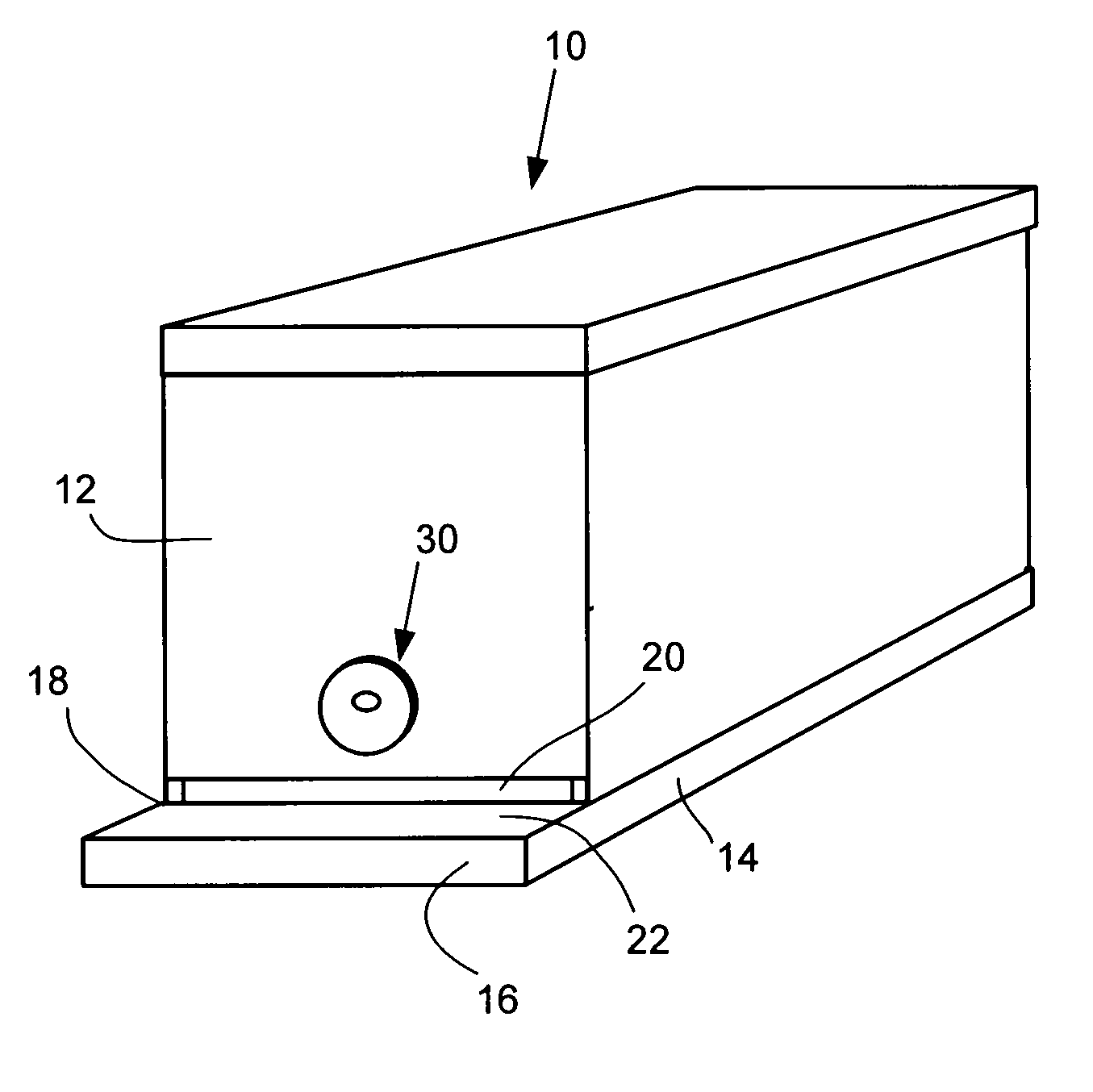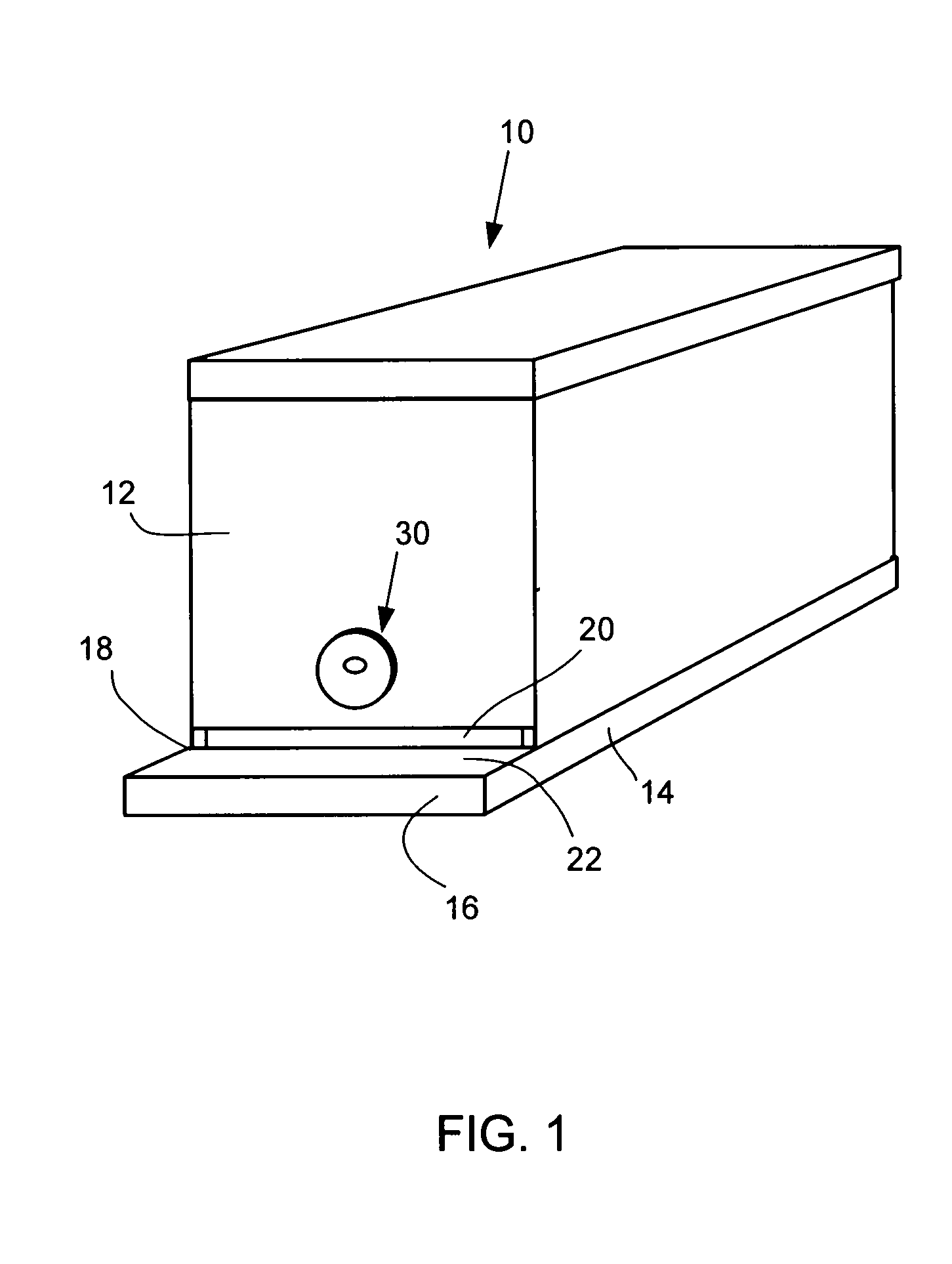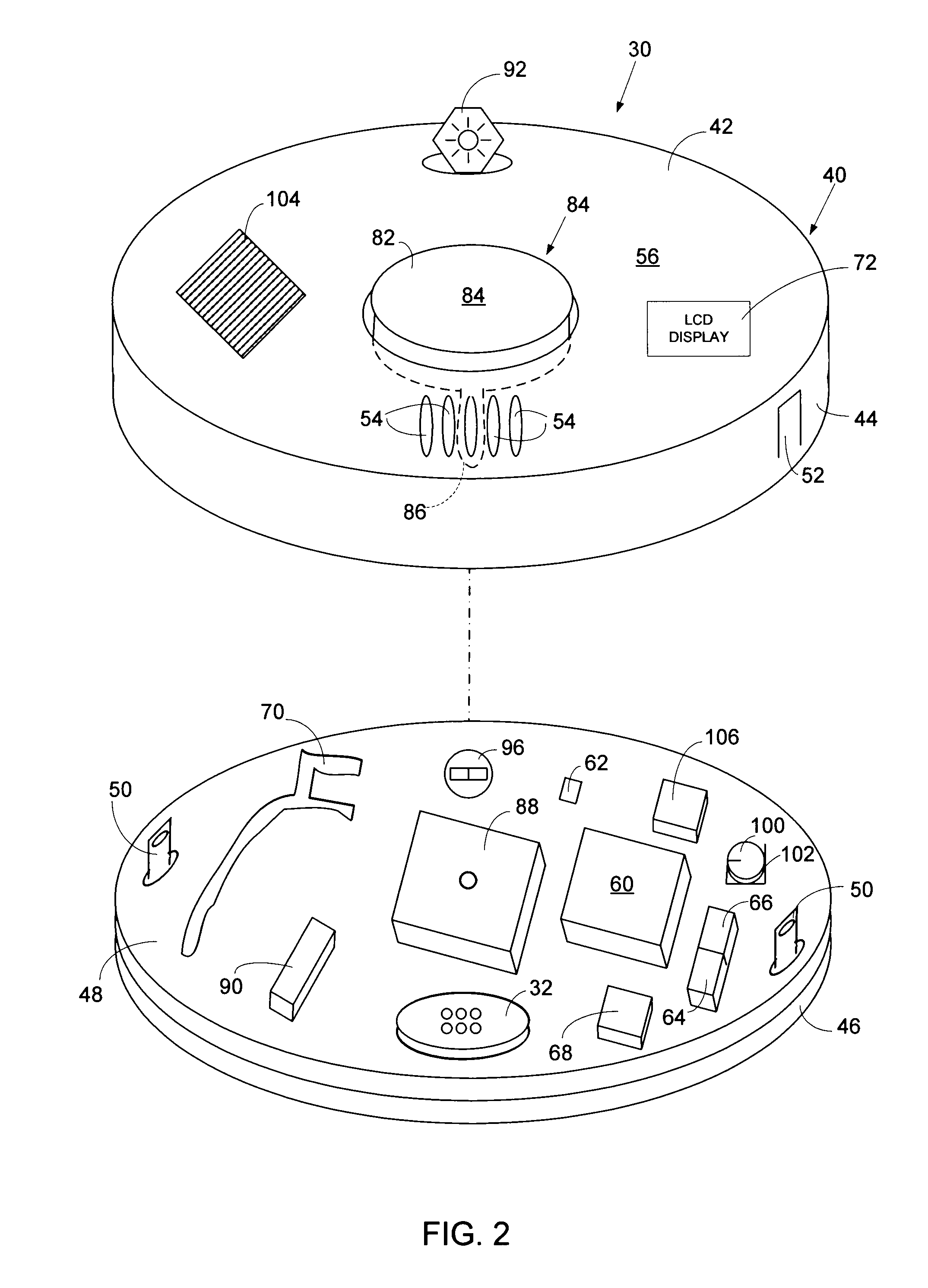Acoustic sensor for beehive monitoring
a beehive and acoustic sensor technology, applied in the field of beehive monitoring, can solve the problems of poor pollination performance, low honey yield, poor pollination of the farmer's crop, etc., and achieve the effect of assessing the operational productivity of the beehiv
- Summary
- Abstract
- Description
- Claims
- Application Information
AI Technical Summary
Benefits of technology
Problems solved by technology
Method used
Image
Examples
Embodiment Construction
[0023]FIG. 1 shows a portable beehive 10 that is specifically designed for beekeeping and houses a population of domesticated honeybees. Beehive 10 is an enclosed, boxed-like structure composed of a front panel 12 and a base 14 having a ledge 16 that projects outwardly from a bottom side margin 18 of front panel 12. A narrow slot 20 extending along bottom side margin 18 and an upper surface 22 of ledge 16 forms an entrance to beehive 10. Beehive 10 is sized to facilitate transportation between an apiary and a field during a crop bloom.
[0024]Worker bees populating beehive 10 principally use entrance 20 when leaving and returning from foraging round trips (sorties); however, the bees populating beehive 10 also use entrance 20 for other various activities. For example, idle worker bees congregate at entrance 20 to protect beehive 10 from intruders as well as to regulate the temperature of beehive 10. Younger worker bees use entrance 20 while refining flying and hovering skills in prepa...
PUM
 Login to View More
Login to View More Abstract
Description
Claims
Application Information
 Login to View More
Login to View More - R&D
- Intellectual Property
- Life Sciences
- Materials
- Tech Scout
- Unparalleled Data Quality
- Higher Quality Content
- 60% Fewer Hallucinations
Browse by: Latest US Patents, China's latest patents, Technical Efficacy Thesaurus, Application Domain, Technology Topic, Popular Technical Reports.
© 2025 PatSnap. All rights reserved.Legal|Privacy policy|Modern Slavery Act Transparency Statement|Sitemap|About US| Contact US: help@patsnap.com



